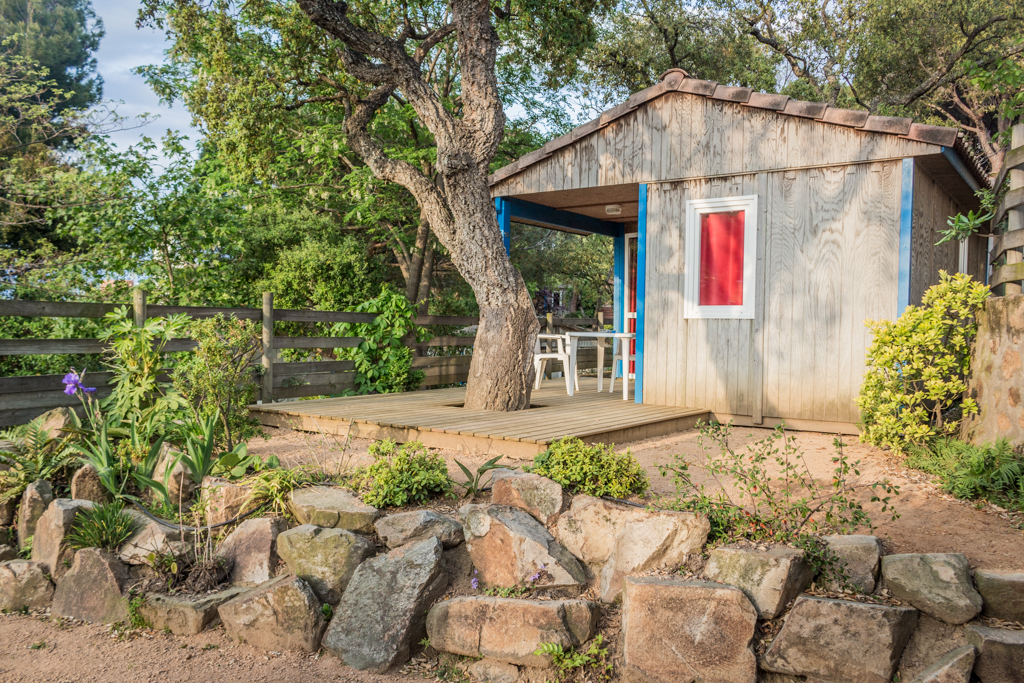From the primitive canvas tents employed by our grandparents to the sophisticated-for-the-times tent trailers of my childhood to the mega-RVs big enough to sleep an NFL team or two, it’s safe to say camping has evolved.
Even those who still camp in the more ‘traditional’ way are working with state-of-the-art equipment these days–waterproof, ultra-light, wicking, abrasion-resistant, self-assembling, bear-repelling nuclear fallout shelters. At least, this is how I imagine camping in tents. “Roughing it” isn’t really my thing.
Camping in Girona (the coastal province on the tip of Spain’s northeast corner, not the city of Girona), has evolved a step further. Gone are the days of toting your accommodation around on your back or towing it behind your car. Today, I want to tell you about the bungalow parks of Girona.
For a first-timer traveling in Europe, bungalow parks struck me as quite the novelty. Partly because HEY! This is ingenious! Why haven’t we adopted this in the US?! And partly because they are EVERYWHERE. Bungalow parks are an incredibly popular way for people to travel in this part of the world, and I have a hunch they aren’t limited to Spain.
Of course, this doesn’t mean that good old fashioned tent camping is obsolete. In fact, by law, campsites are only allowed to use 40% of their capacity for bungalows; the remaining space is reserved for tents and camping vehicles.
I got to experience camping in Girona’s bungalow parks immediately following the TBEX conference and let me tell you–this was NOT the sort of camping I’m used to. Over the course of five nights, four fellow bloggers and I visited five different bungalow parks, each with its own style, its own natural beauty, and its own unique activities, attractions and services to offer guests.
And not only was the accommodation far more plush than a flimsy mat thrown onto rocky terrain, each campsite had its own on-site restaurant serving up gourmet meals I never dreamed I’d associate with the word “camping.”
Allow me to introduce you to…
Bassegoda Park
The first stop on our five-day tour of Girona’s campsites was Bassegoda Park in the town so small you can hardly call it a town, Albanyà, in the Pyrenees. Having just spent a good chunk of time on the coast, it was a nice change of pace to head for the mountains. This camping park is in the Catalonian comarca of l’Alt Empordà (a subdivision contained within the Spanish province of Girona) which, aside from being home to some of the most untouched wilderness in the region, is also well-known for its wine production.
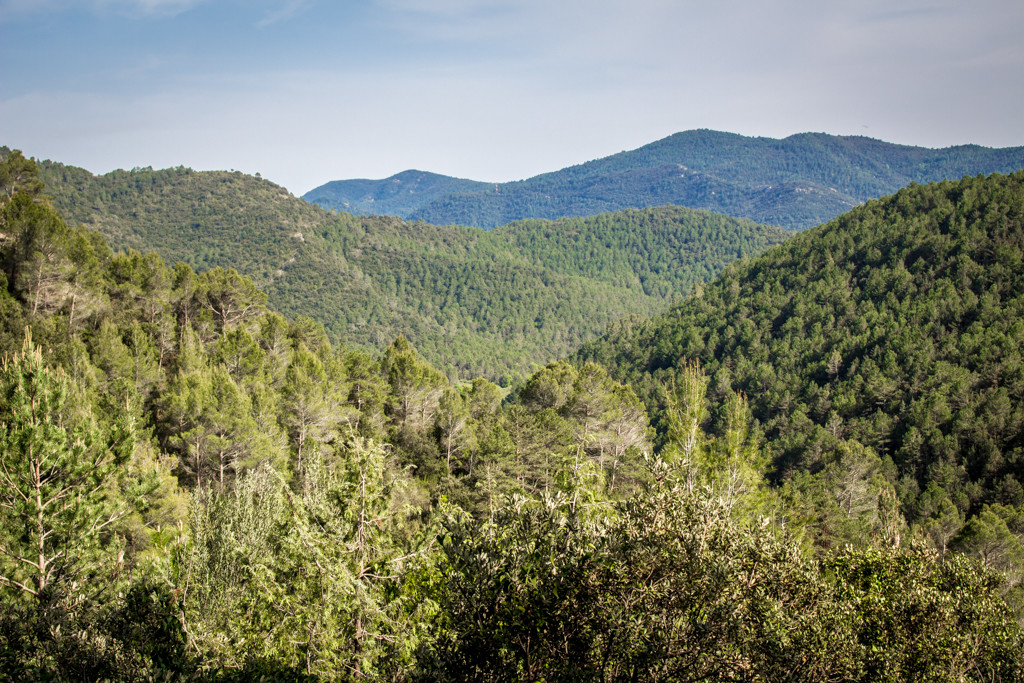
The setting of Bassegoda Camping Park is stunning; lush green mountains encircle the campsite and every path is meticulously lined with shade trees. Even the bungalows are perfectly color-coordinated with their surroundings, built using earthy tones of brown and green.
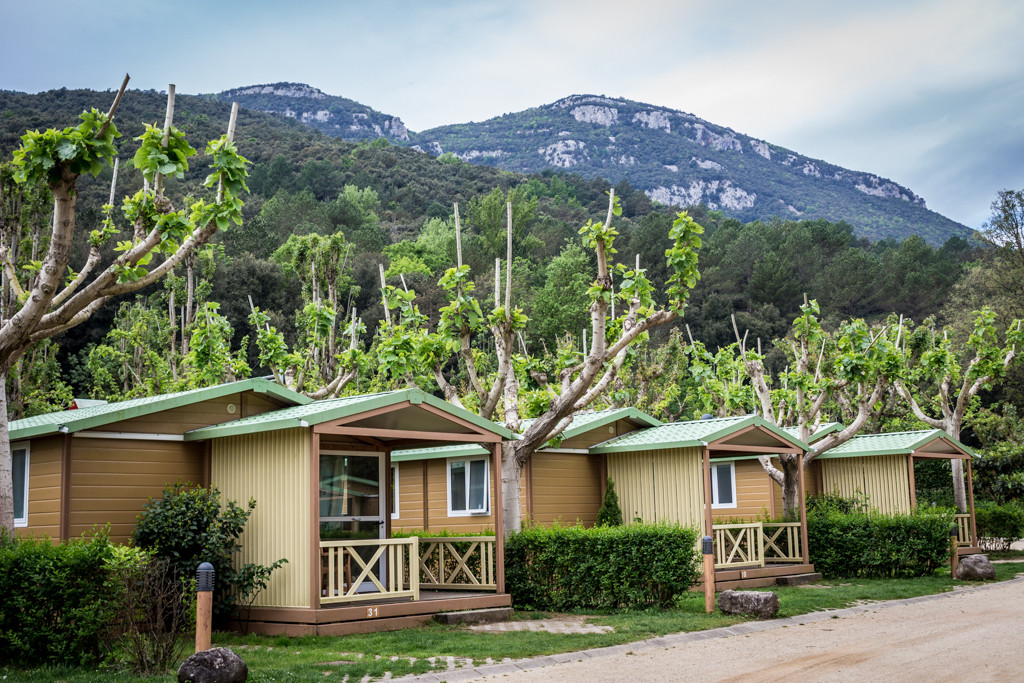
The bungalows sleep anywhere from one to seven people. The private bungalows are popular among the cycling community, we were told; the campsite sits along the popular GR-11 trail which traverses the entire range of the Pyrenees and cyclists will often stop in for the night and continue on their way the next day. The larger bungalows are designed with families in mind, typically with one room containing a single bed and the smaller rooms outfitted with twin or bunk beds.
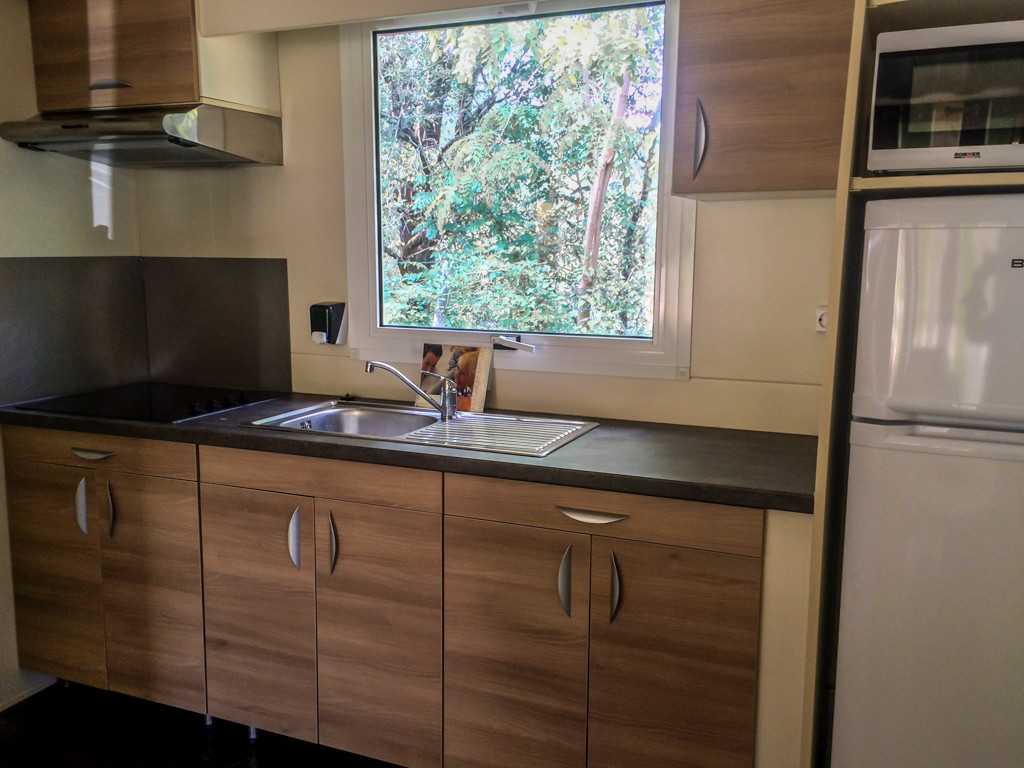
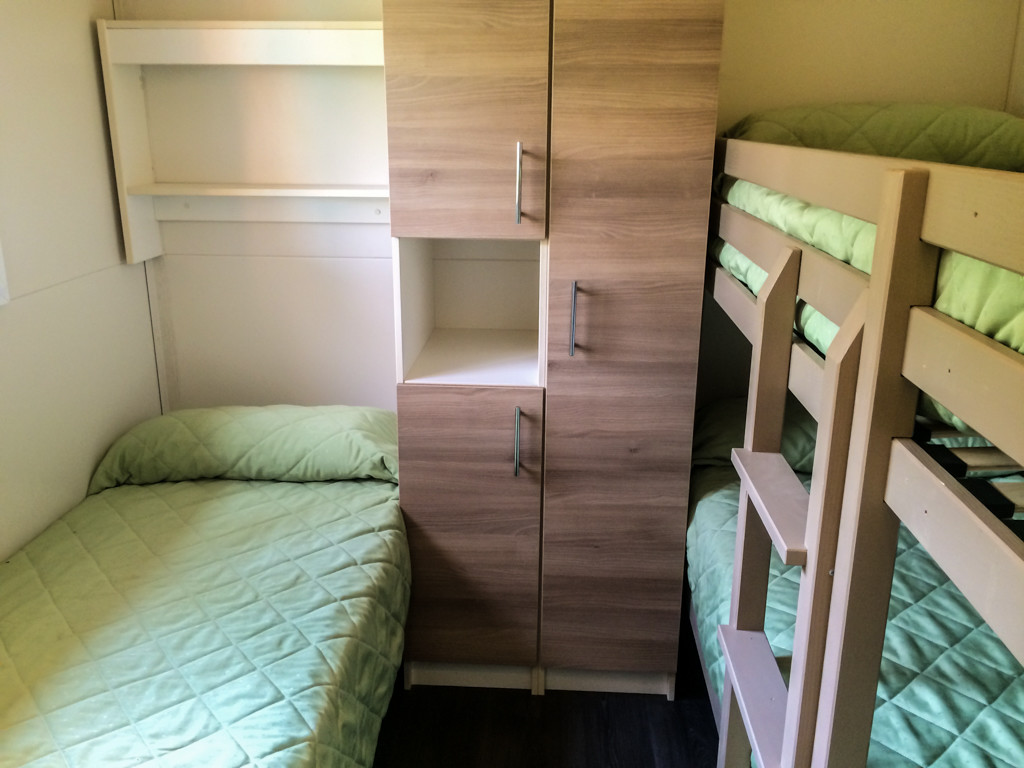
Guests at Bassegoda can partake in any number of outdoor activities. Our group enjoyed a hike up the mountain past a river and the stone ruins of an abandoned house. Additionally on offer are things like hunting, fishing, horseback riding, four-wheeling and more. The grounds are outfitted with sporting courts, a playground for children, and a swimming pool.
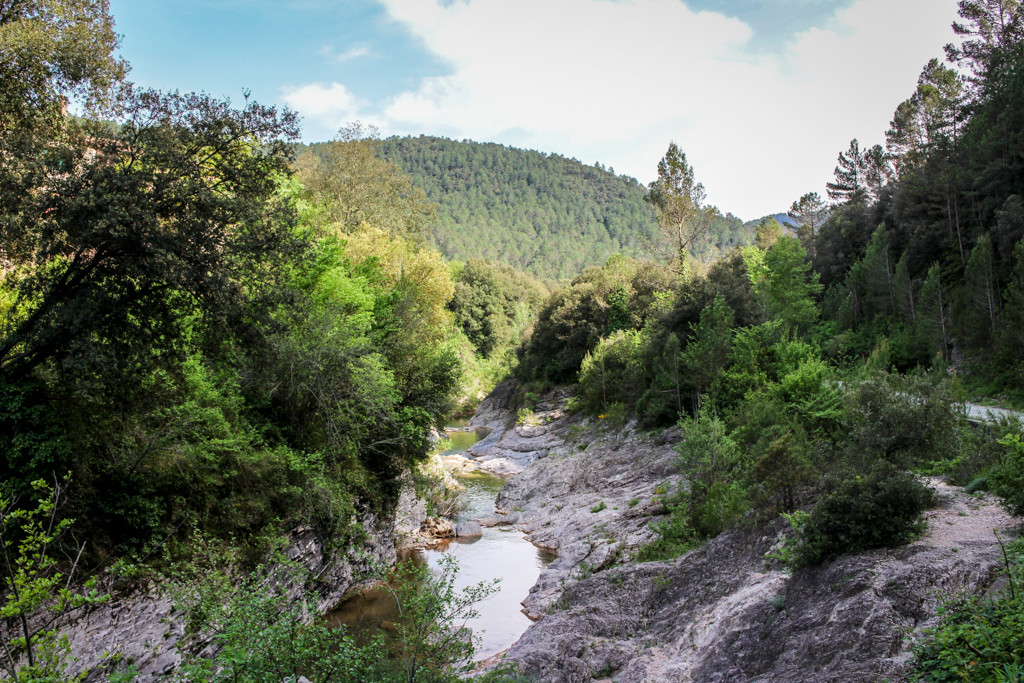
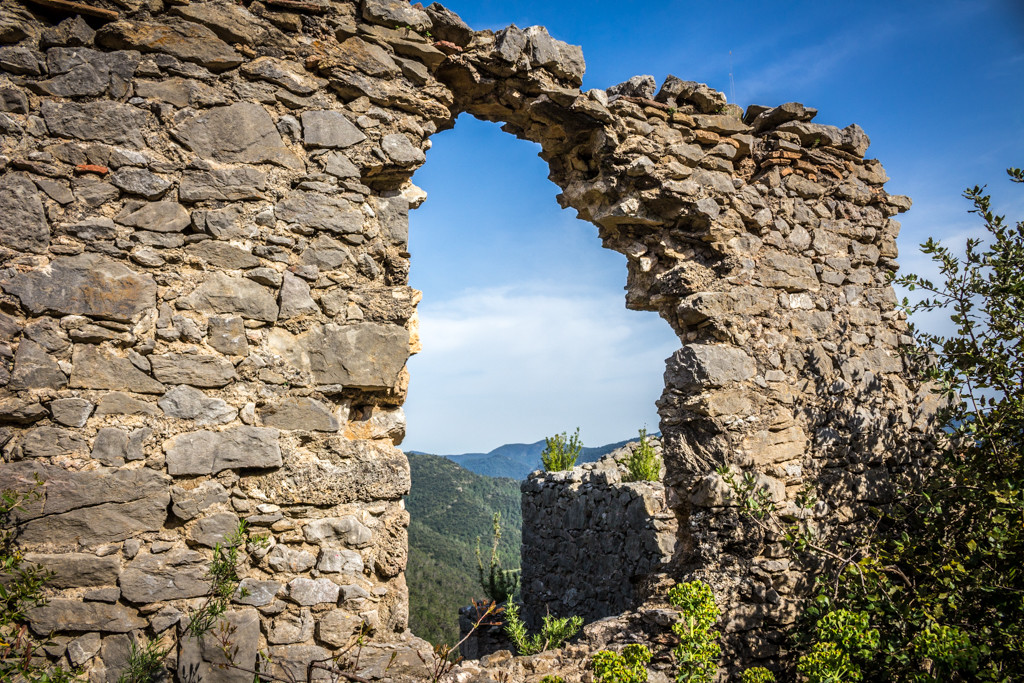
Bassegoda was also the campsite that showed the most dedication to environmentally friendly practices. Energy use on the campsite is carefully controlled, recycling is encouraged with bins placed throughout, and the campsite’s CO2 output is well below the legal allowance for businesses, among other things.
All that aside, perhaps the best part of this campsite was its gourmet restaurant. Considering that I’m more accustomed to cooking hot dogs and marshmallows over a campfire, the incredible dishes we were presented with at Bassegoda Park blew me away. Every meal was brilliantly prepared, every appetizer just a little too delicious, every wine pairing (Yes! Wine pairing! While camping!) impeccable.
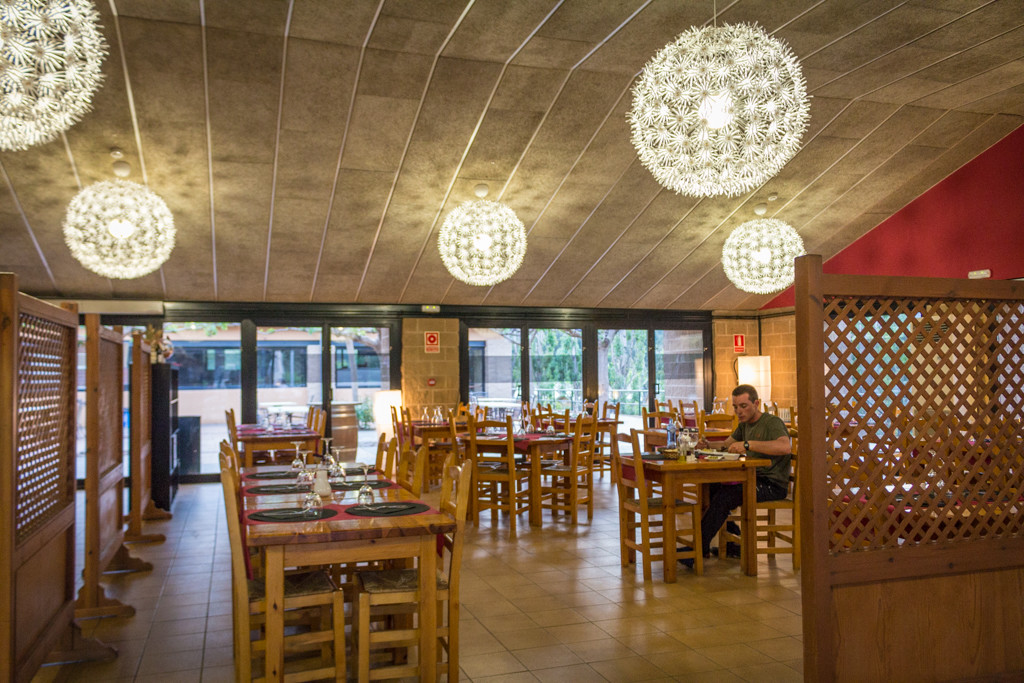
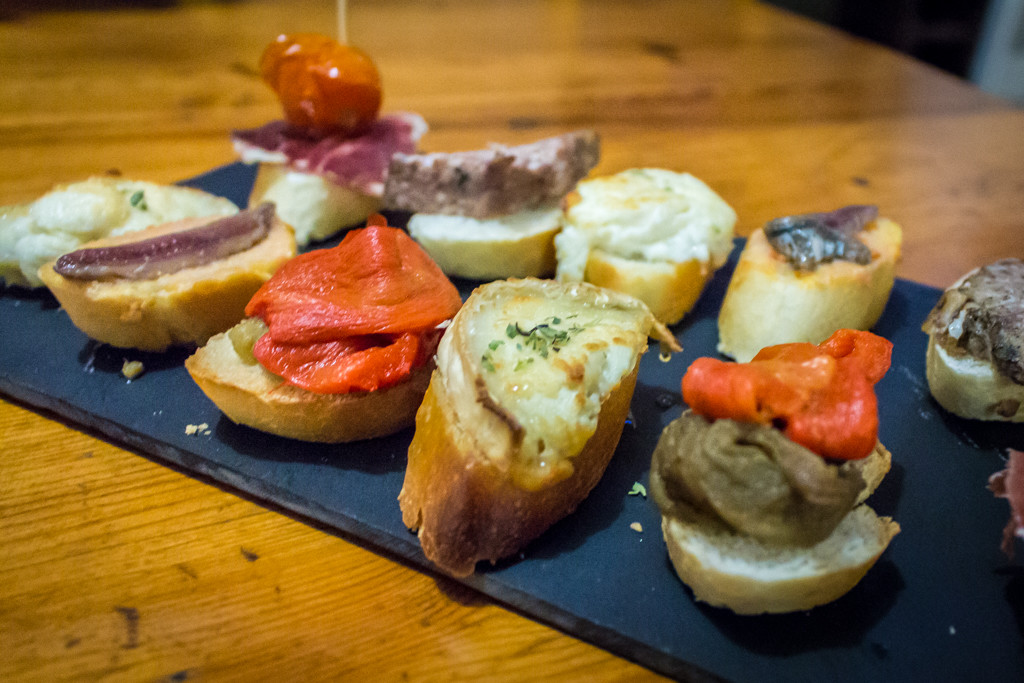
This was our first realization that camping in Girona is, for many people, a luxury experience. You won’t see guests hunched over a fire pit heating a single can of baked beans, that’s for sure.
Illa Mateua Camping Resort
Stop number two on our tour of campings in Girona took us back to the rugged Costa Brava. Illa Mateua Camping Resort (illa meaning island in Catalan) is named for the small island (more of a rock, really) just off the coast of the campsite in the spectacular Bay of Roses and is located in the town of L’Escala.
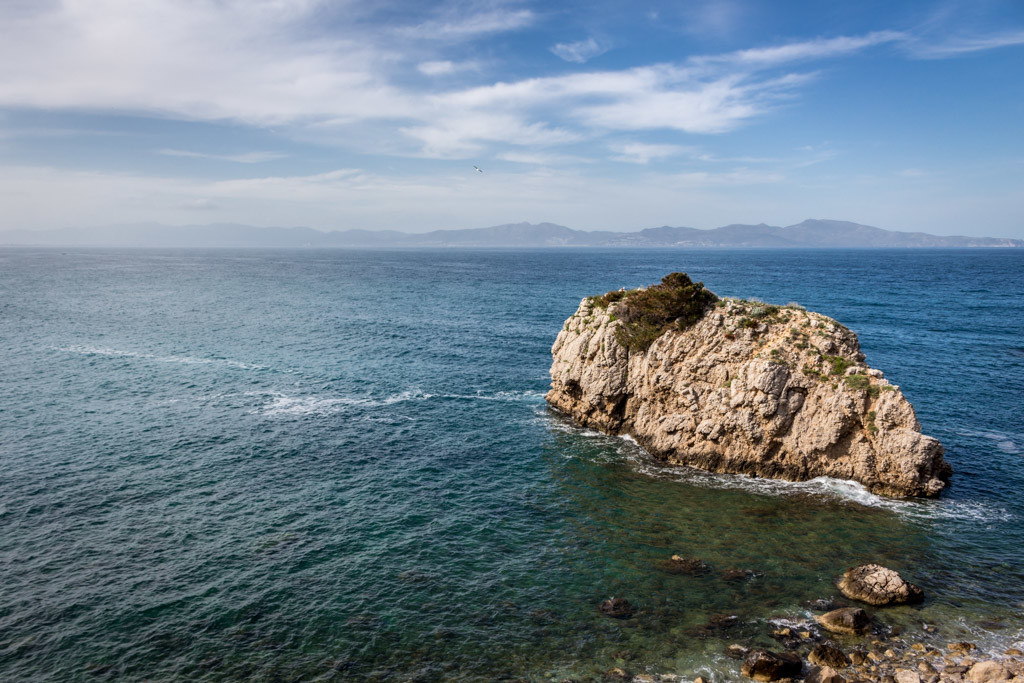
The camping tradition at this particular site goes back many years. The Sureda family, proprietors of Camping Illa Mateua, arrived in L’Escala in 1670, although camping didn’t begin until 1958 when Martín Sureda i Farrés, grandfather of the campsite’s current owner, began leasing his family’s land to meet a public demand for the service.
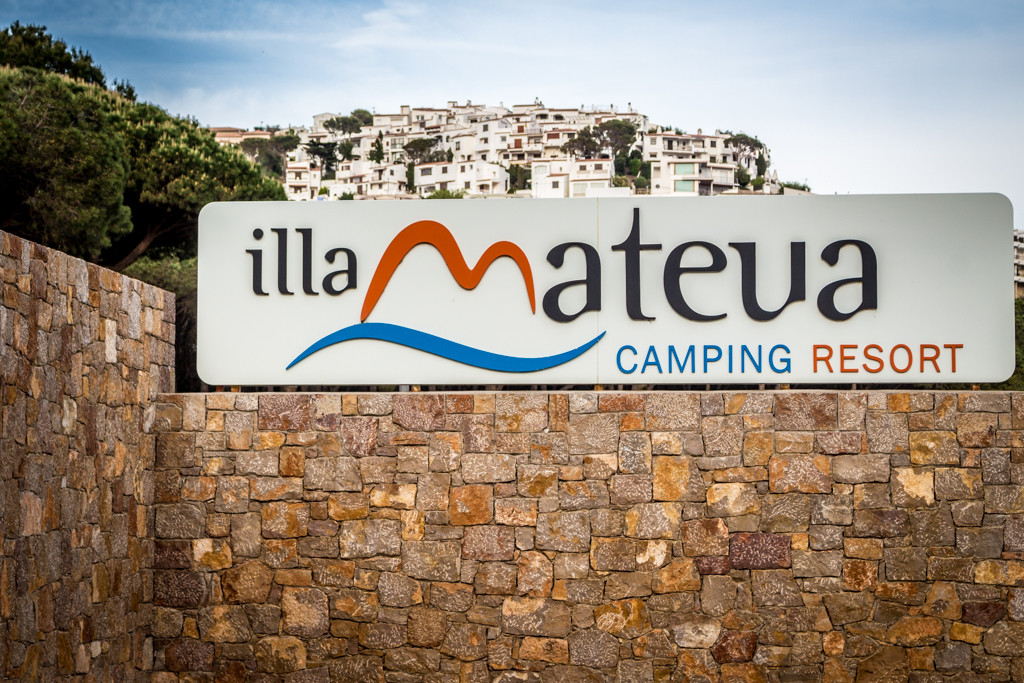
Not long after our arrival to the campsite, we were rounded up for a boat ride that would showcase the coastline that at that point we’d only seen from the vantage point of the shore. It was late in the afternoon but still plenty warm outside, the fading sun creating lovely light for photos. Our meeting point was Mateua Dive, the campsite’s diving school and PADI dive center. We loaded into a van and headed to the port a few minutes’ drive away.
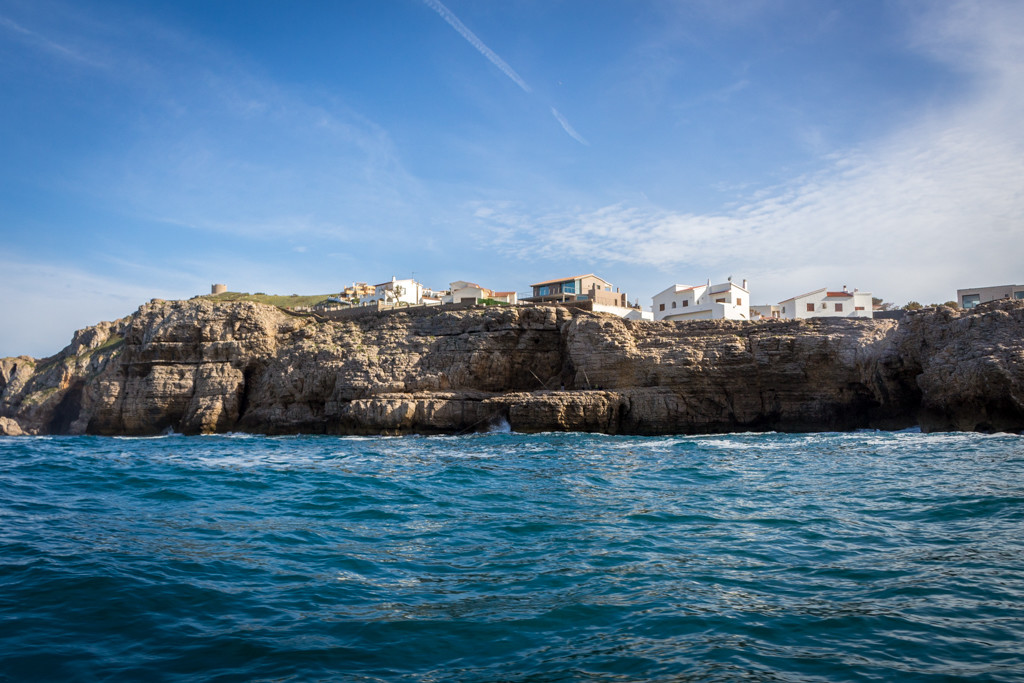
The water was a tad rough that day, but nothing could spoil the beauty that we were taking in. The Costa Brava, which translates to ‘rugged coast,’ is exactly that. Dramatic cliffs rise up directly from the sea looking imposing, dangerous, and a little reminiscent of that one scene from The Princess Bride.
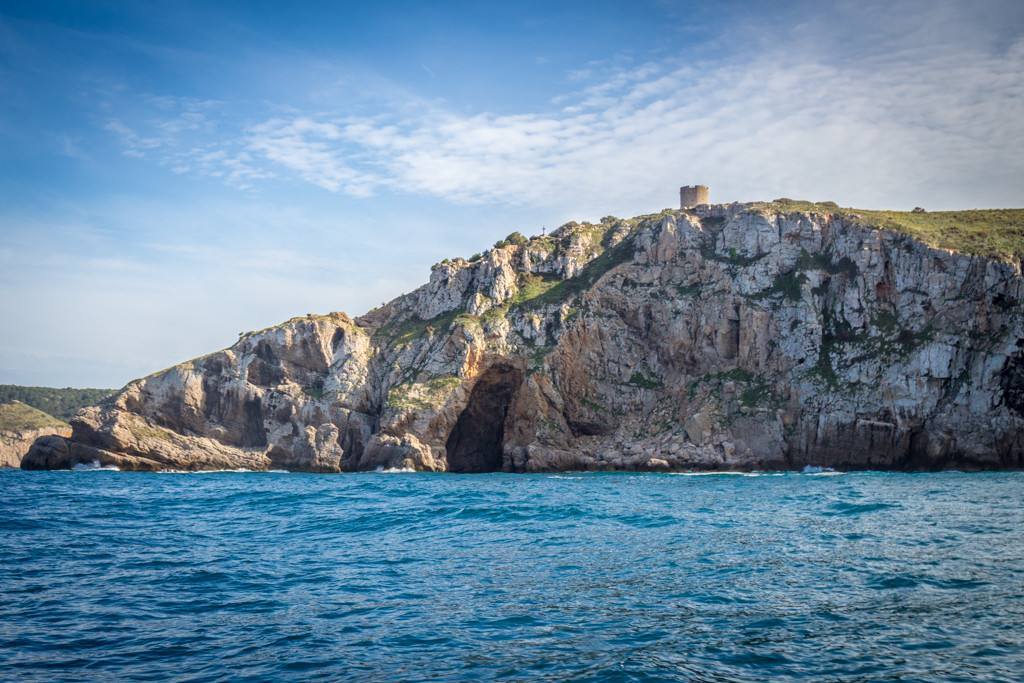
We cruised into a small inlet to admire the whitewashed homes dotting the hillside and the beach of L’Escala. A little ways further down the coast and we encountered the best sites for diving, although unfortunately our schedule at Illa Mateua didn’t allow for a dive trip.
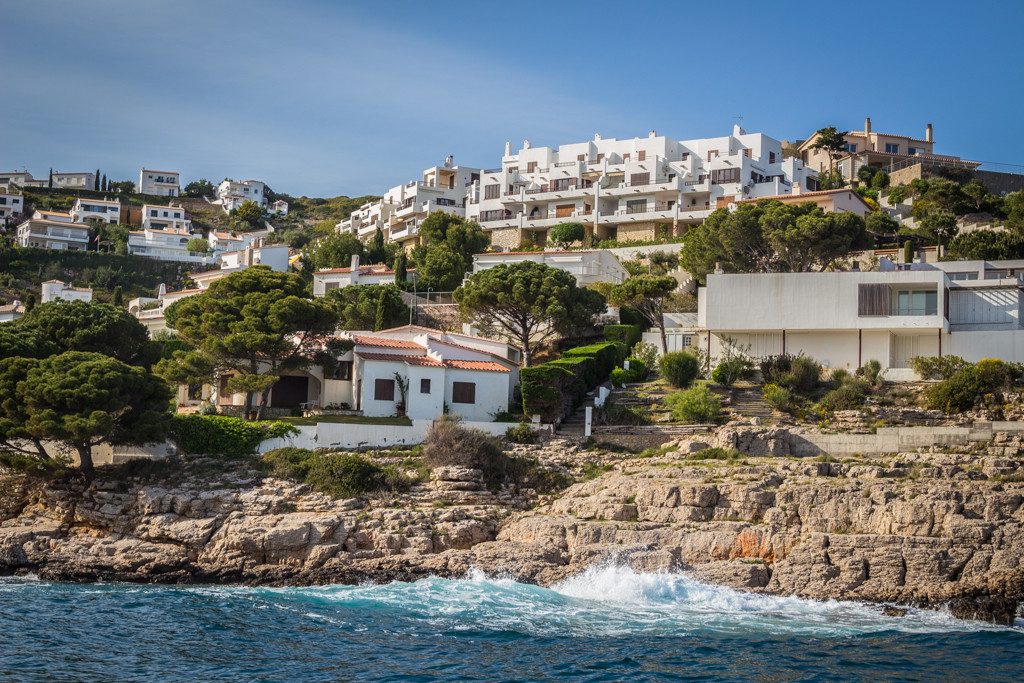
Our meals were, once again, not your average camping fare. Illa Mateua offered some of the most popular Spanish dishes like paella as well as a wide variety of international dishes to suit their visitors from around Europe and beyond.
Camping Les Medes
From L’Escala, we made our way further down the coast to the town of L’Estartit, the hometown of our tour guide and the location of campsite number three, Camping Les Medes. I knew two things about this campsite before our arrival–that they had a resident Bernese Mountain Dog named Tro that I couldn’t wait to meet and that we’d be there on my 28th birthday. In short, I knew it would be a fun visit.
And boy, Camping Les Medes did not disappoint.
The first activity of our morning after dropping our bags at our beautiful bungalows (more on those in a second) was to wetsuit-up for a sea kayak to Les Illes Medes, a group of craggy islets about one mile offshore from L’Estartit. We breathed a collective sigh of relief when we awoke that morning to a perfectly calm sea, in stark contrast to our boat ride the day before. It would be nothing but smooth paddling.
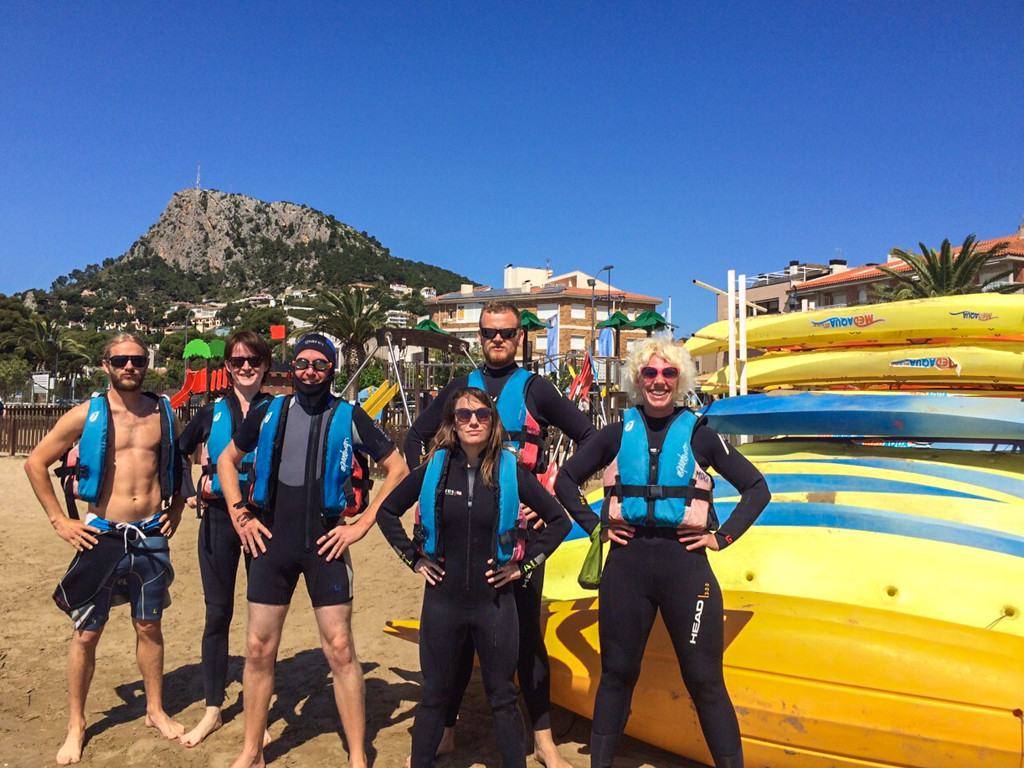
With a sixer of birthday beers in tow (it was past noon, okay?) we went on our way. A shocking amount of jellyfish bobbed on all sides of us for just about the entire ride, putting all of us off to the idea of swimming. The cold water didn’t much help, either, but no matter–we were content to float around the beautiful little islands and take in our scenery, take stupid selfies and feel obnoxiously smug about life.
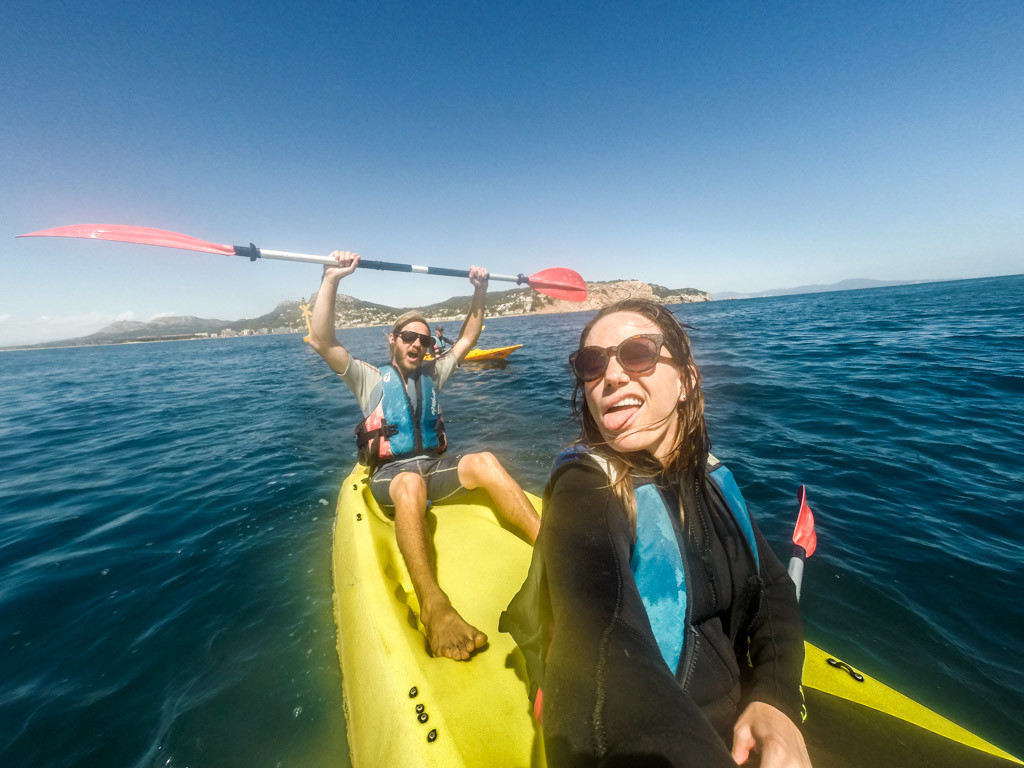
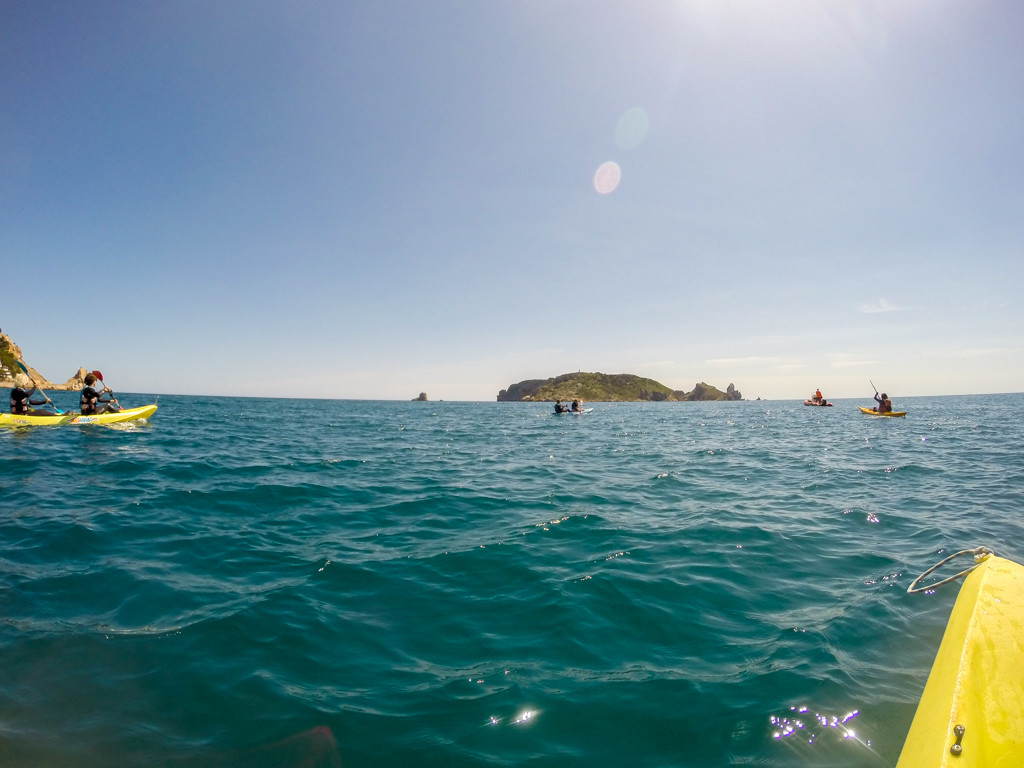
We enjoyed lunch right there at the marina, the first of two über-indulgent meals of the day. In addition to the rich food (think foie gras, seared tuna, and tiramisu) beers and bottle after bottle of wine were delivered to our table. Europeans are all about the day drinking–who am I to shirk local customs? It would have been impolite to say no.
Once back at the campsite, we really got settled into our bungalows. The modern rooms on the upper floor were easily the most beautiful we’d seen yet. Each one was like a one-bedroom apartment with its own living and dining area, kitchen, and ample balcony overlooking the pool. We reconvened by said pool where we chitchatted and blogged while enjoying the sunshine and sipping more beers. I was even able to do my first load of laundry in weeks.
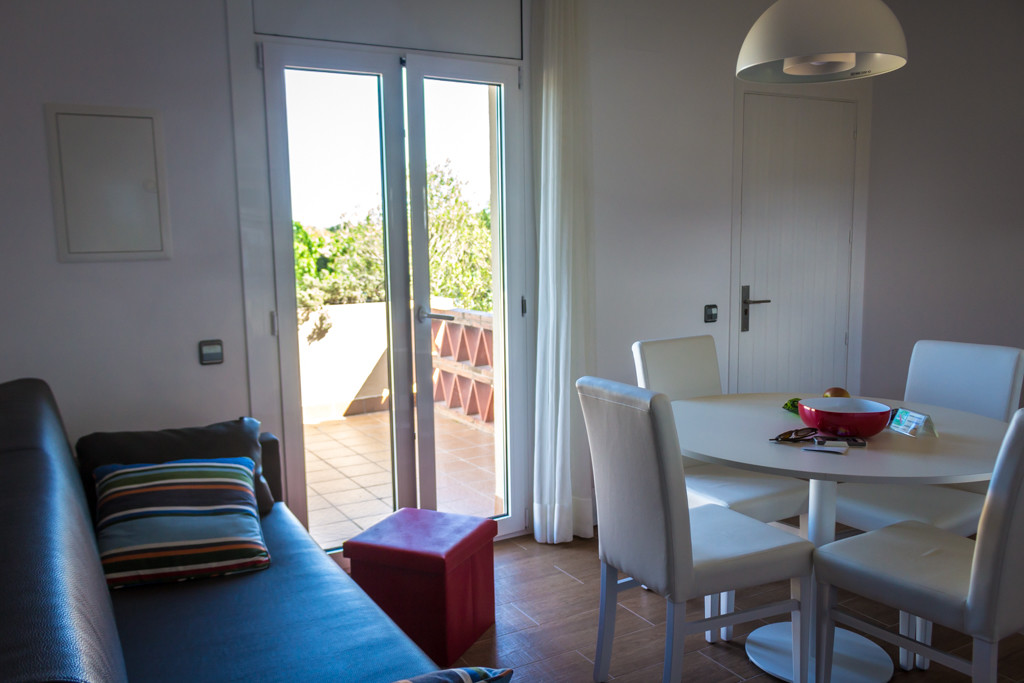
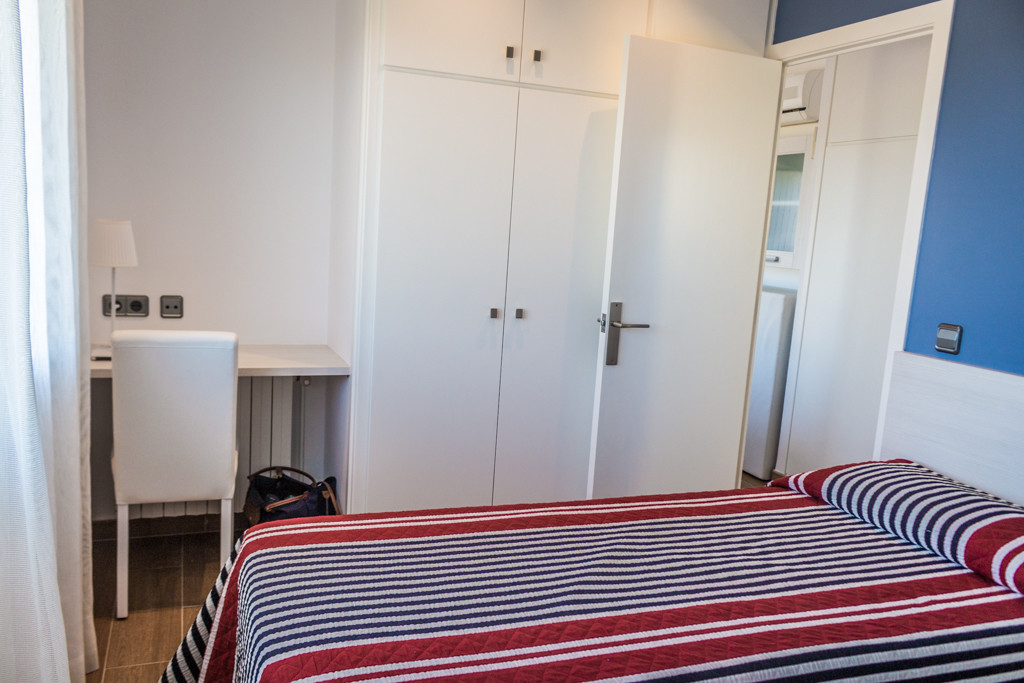
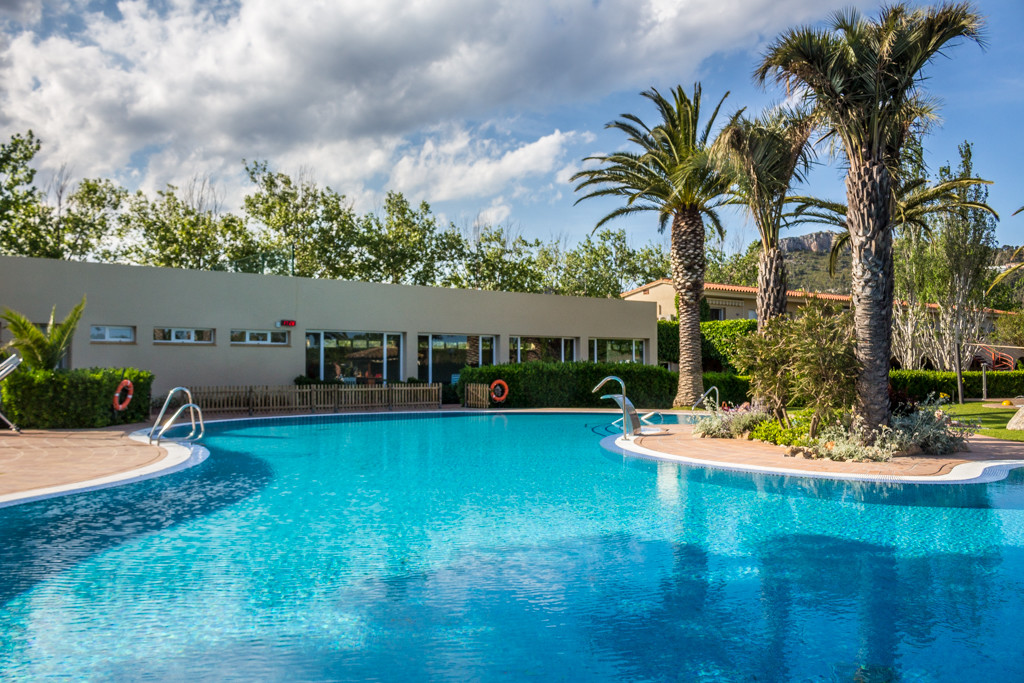
As the afternoon turned into evening, we moved to the dining area where we enjoyed a concoction known as Agua de Valencia, a cocktail made with a base of cava (Spain’s sparkling wine), orange juice, vodka and gin.
Our dining experience at Camping Les Medes was excellent. Being so near the sea, they are able to offer plenty of fresh seafood options like mussels, calamari, local fish, prawns, and more. Though I’m not a seafood lover myself I know my companions appreciated these salty choices from the deep blue.
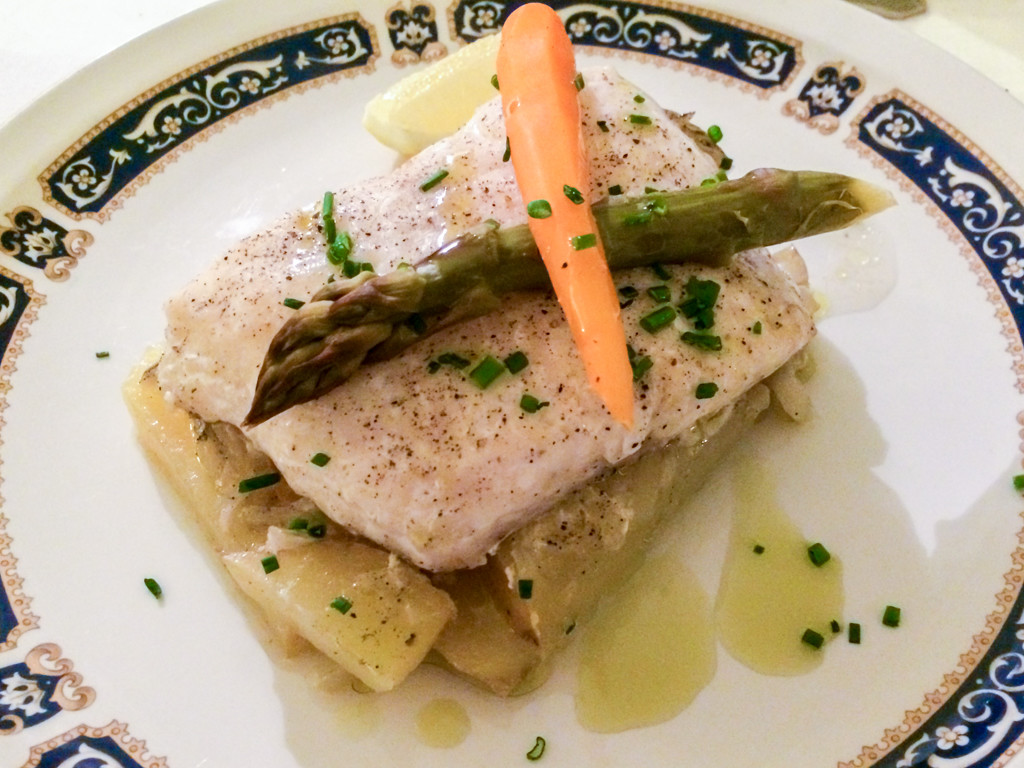
I stuck more closely to the many freshly baked breads, olives and cheeses typical of the Mediterranean diet. Our meal was rounded off with a smorgasbord of desserts, including a specially prepared birthday cake just for little ol’ me.
Camping Internacional de Calonge
Camping Internacional de Calonge, located 2 kilometers from Platja d’Oro, was the largest campsite we’d seen yet with a total of 780 camping pitches and 100 bungalows.
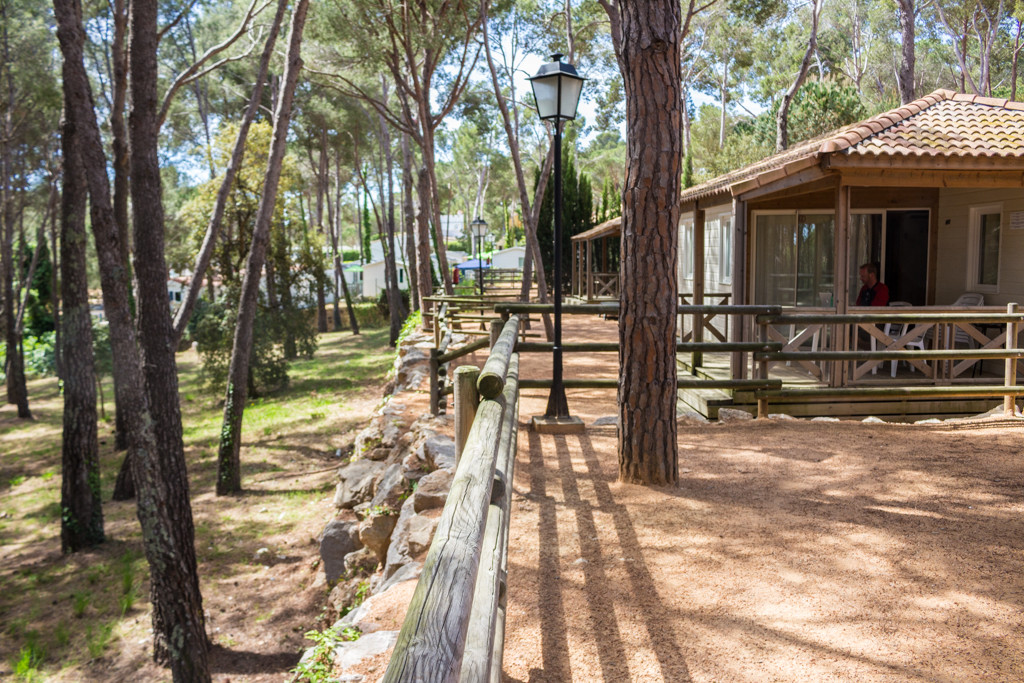
The site included sport facilities for just about any sport you could imagine, a swimming pool, and a playground for children. The campsite’s nearby beach means plenty of water sports are easily accessible to guests as well.
We were lucky enough to spend the afternoon on the beach where we explored the coast on stand up paddleboards. The cerulean and turquoise waters of the Mediterranean never cease to dazzle me, and this excursion was no exception. We had the option of donning a snorkel mask to explore below the surface, but in early May the water remained far too cold for my warm blood.
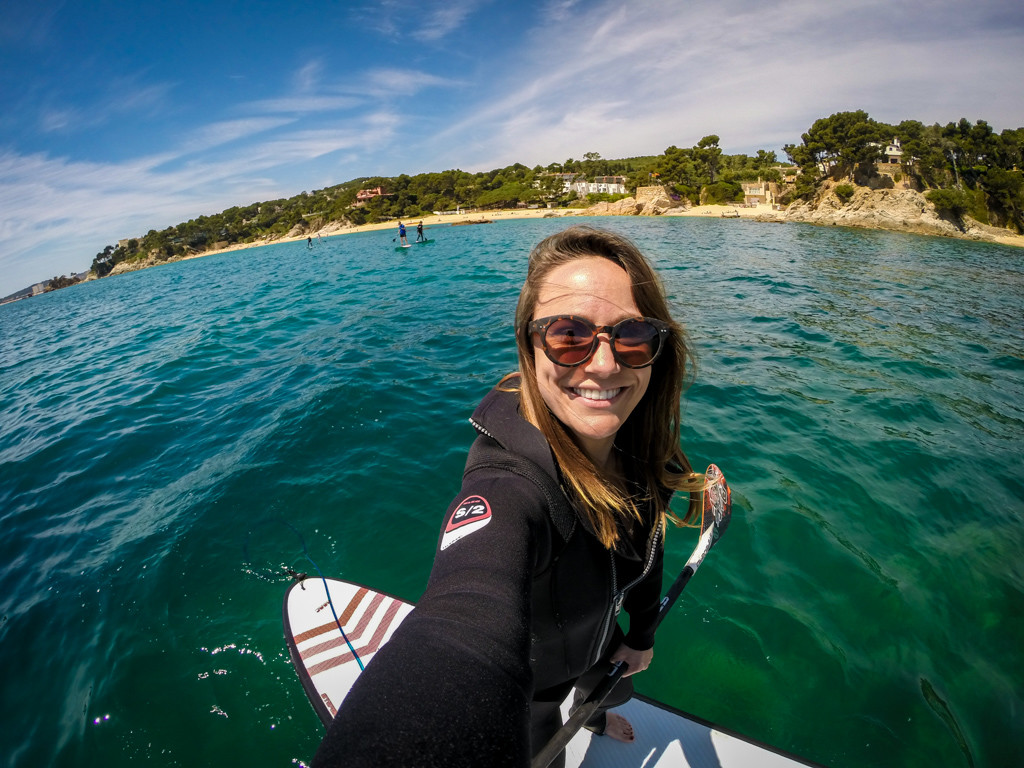
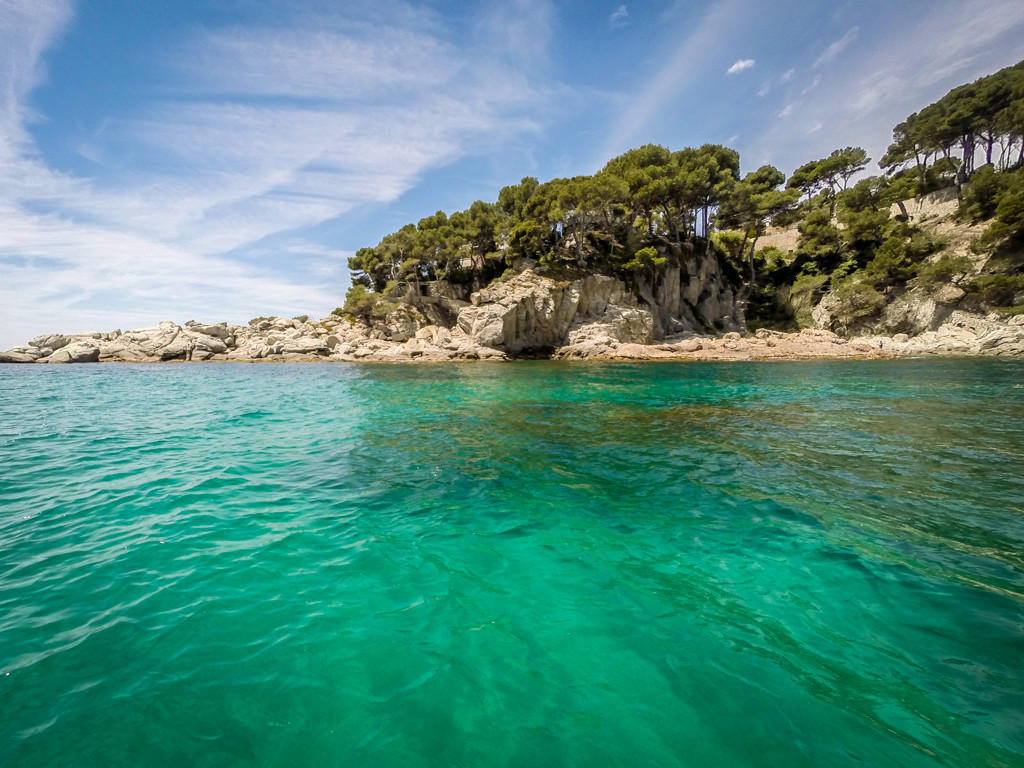
The beach itself was lively and full of families playing soccer, volleyball, and learning to paddleboard. It seemed to be one of the campsite’s main attractions, and with such easy access (a roughly 10-minute walk from our bungalows) it’s not hard to see why.
In the evening, we dined in the campsite’s ultra-swanky restaurant. I felt underdressed in jeans and a sweatshirt and had to remind myself a time or two that we were still camping.
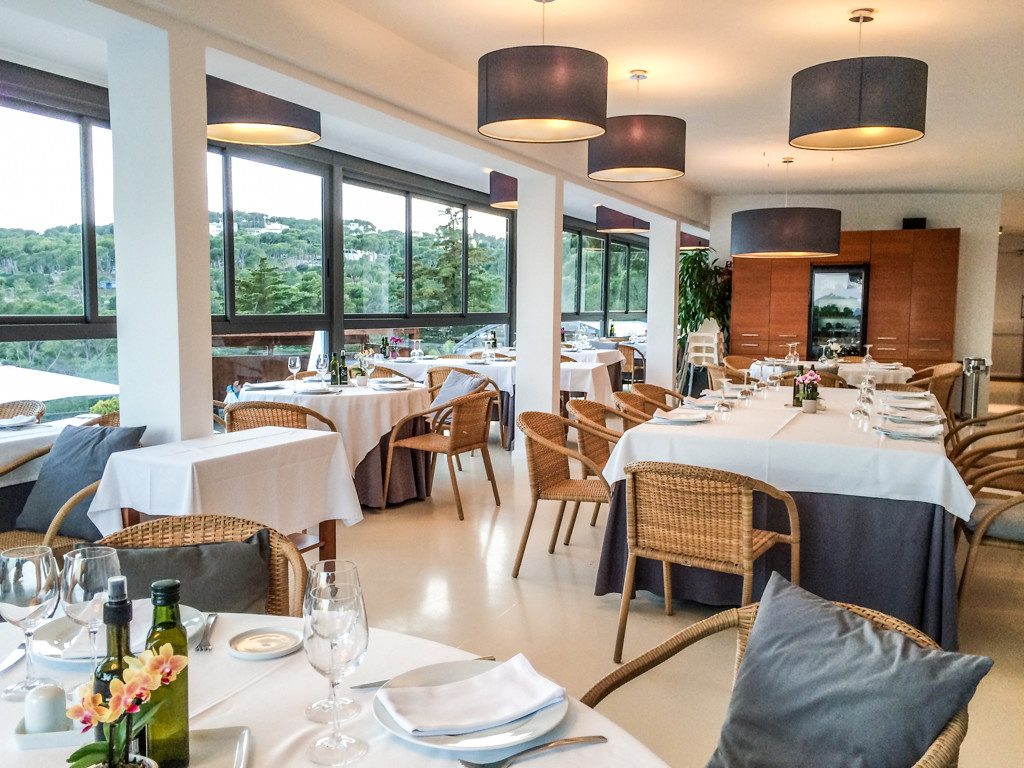
Upon request, the kitchen delivered us light fare like fresh salads and fruit (to go along with our cava, beer and wine, of course). Our trip had been entirely too gluttonous up until that point and our bodies were begging us for a dinner that wouldn’t leave us feeling comatose. Camping Internacional de Calonge delivered on this front and then some; even the desserts were small and light. The view from the dining room wasn’t half bad, either.
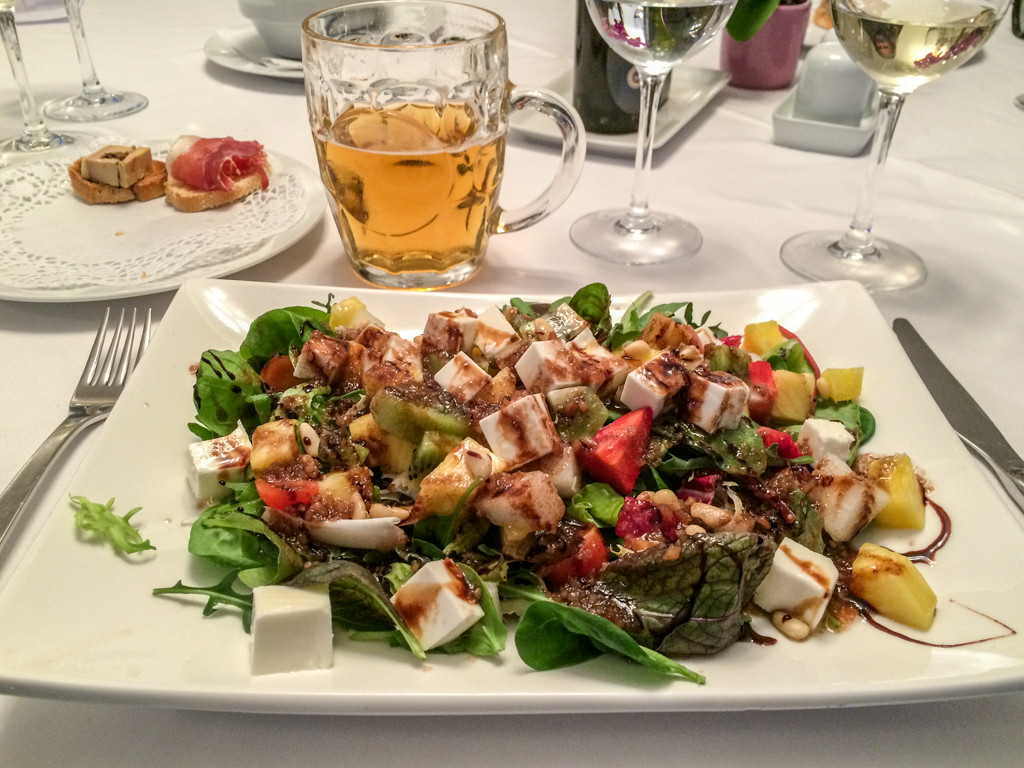
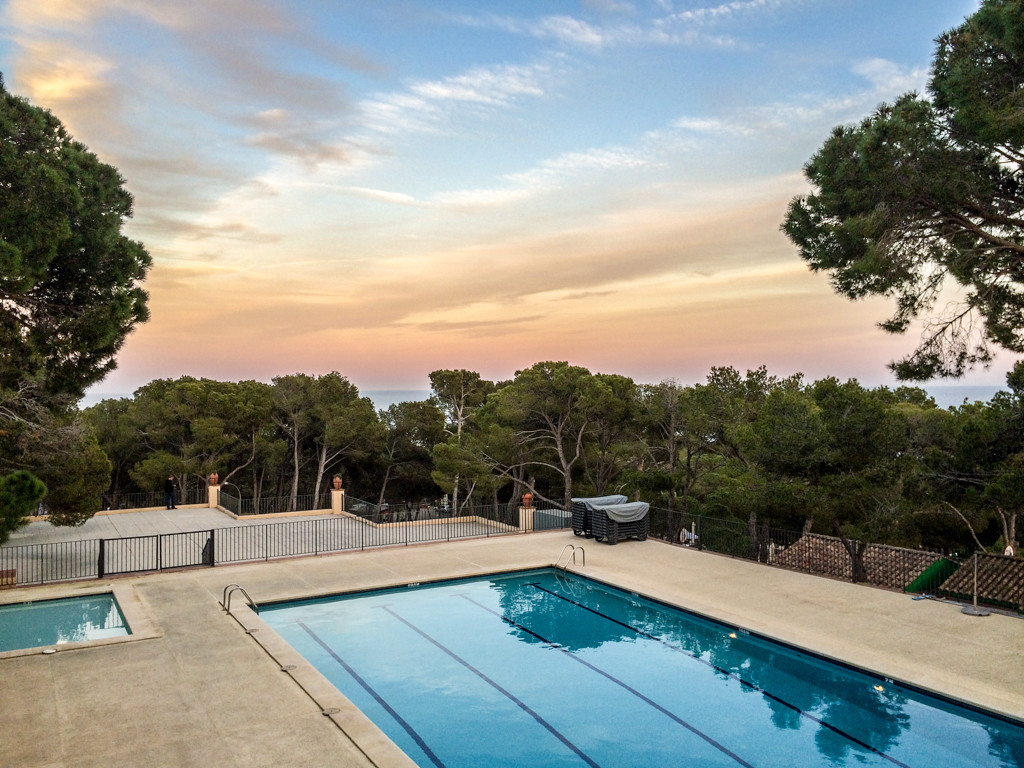
Bungalodge Sant Pol
Last but certainly not least, we arrived at campsite number five, Camping Bungalodge Sant Pol in Sant Feliu de Guixols. This relatively small campsite boasts a fabulous beachside location (just 350 meters from the water, according to their website) where you’ll find fine sand and shallow waters perfect for families to enjoy along with a mild climate year-round.
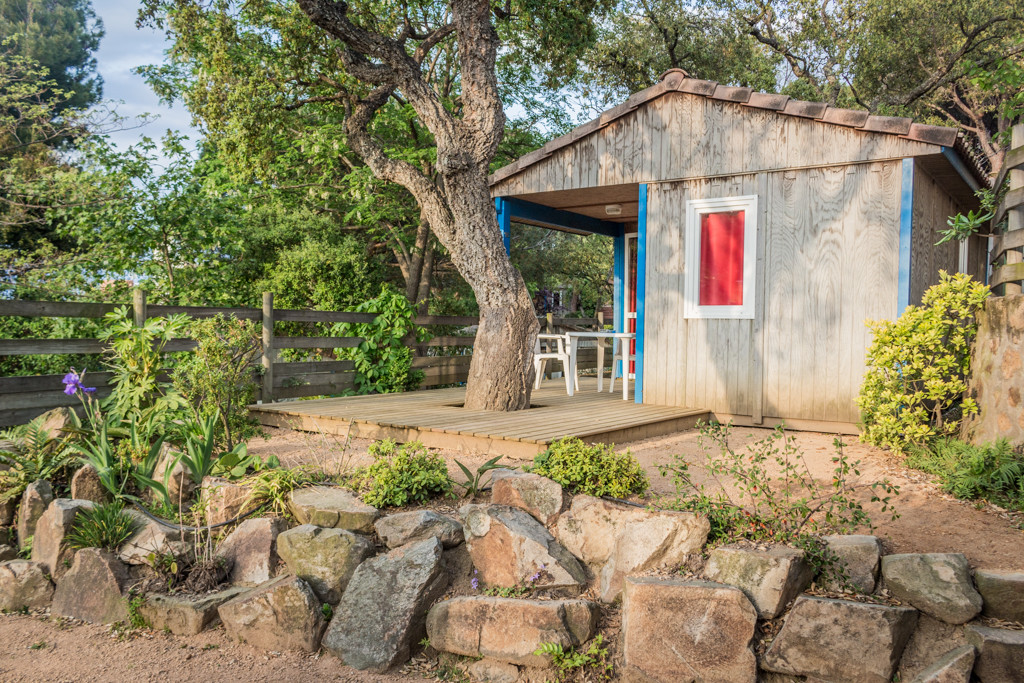
My two-bedroom bungalow had a lovely view of the pool and the green valley just beyond. As with all the bungalows we’d seen so far, this one was fully equipped with modern appliances and kitchen utensils, dishes, and cutlery should you decide to stay in and cook for yourself.
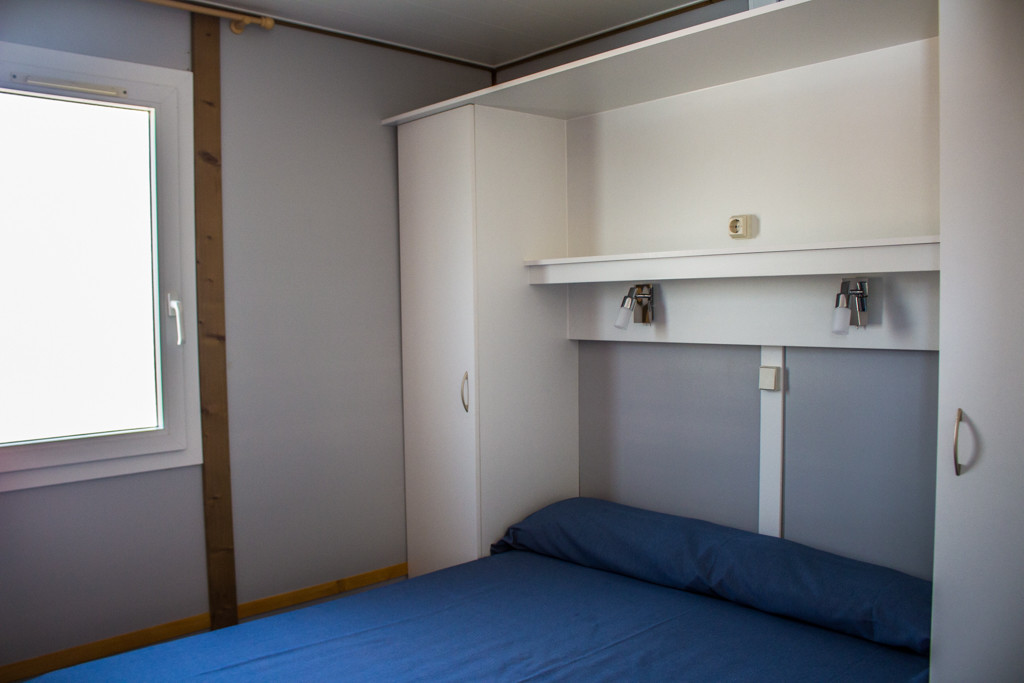
Our afternoon at Camping Sant Pol was decidedly lazy. We opted for poolside relaxing instead of hoofing it all 350 meters to the sea followed by siestas in our plush beds before our final dinner of the trip. We had a sneaking suspicion it would be more rich, heavy foods, and we needed to muster up the energy to power through it.
The campsite owner, Anna, joined us for our meal that evening. She was an absolute pleasure to chat with and it was evident she took a lot of pride in the quality food her restaurant produced. The restaurant, El Petit Pol, sources their products straight from the local Sant Feliu market and will even deliver meals right to your bungalow or pitch.
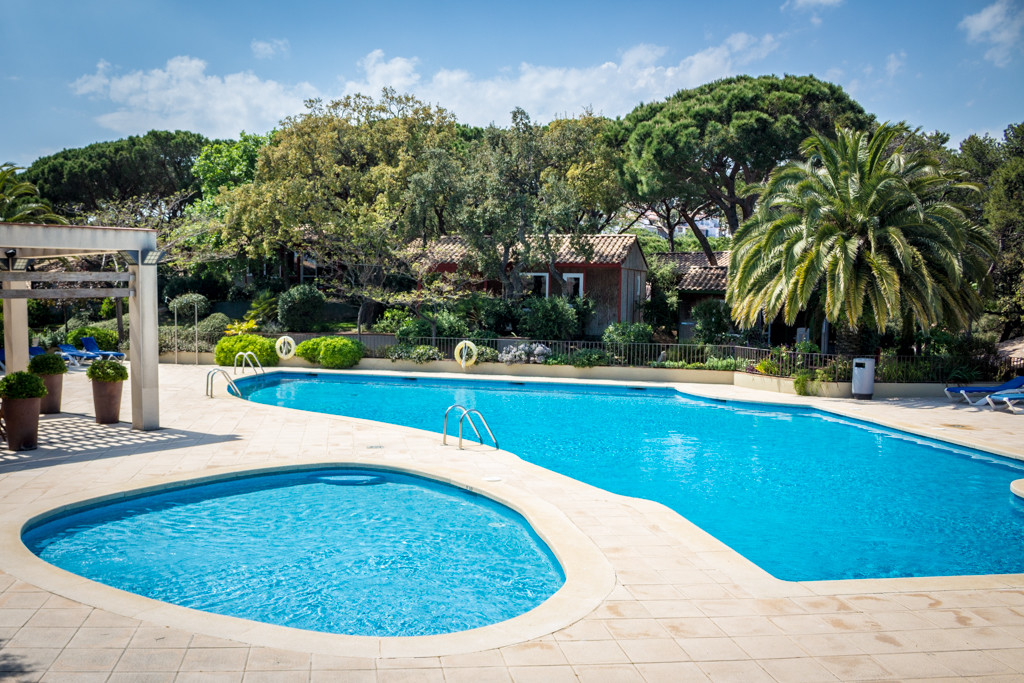
If you haven’t noticed the pattern already, gourmet dining is an absolutely vital aspect of the camping experience in Girona. I enjoyed my festive, fruit-filled salad and the creamy, flavorful mushroom risotto that followed it. I left yet another meal feeling as though I might burst and vowed to spend the next several weeks working out and eating modestly. I’ll let you guess how that plan panned out.
Helpful Tips for Camping in Girona
- Prices fluctuate depending on the season and local holidays–be sure to check the calendar before choosing your dates. July and August are the peak months when prices are highest.
- Pets are generally not allowed in rental units like bungalows and tents.
- Bungalow parks are family-friendly, so it’s not the best idea to come with a group of friends hoping to party all night. Most sites have a “curfew” or quiet hours beginning around 11 pm.
- All sites we visited offer WiFi; access codes can be purchased for a small fee. The connections weren’t always reliable, though, so if you have important things to do, it’s wise to formulate a backup plan.
- Don’t worry if you’ve forgotten necessities like sunscreen or insect repellent. Campsites are equipped with markets where you can buy these items and other toiletries, food, drinks and more.
Had you ever heard of bungalow parks? Have you been to one?
I participated in this camping experience as a guest of Associació de Càmpings de Girona. All opinions expressed in this article are my own.

